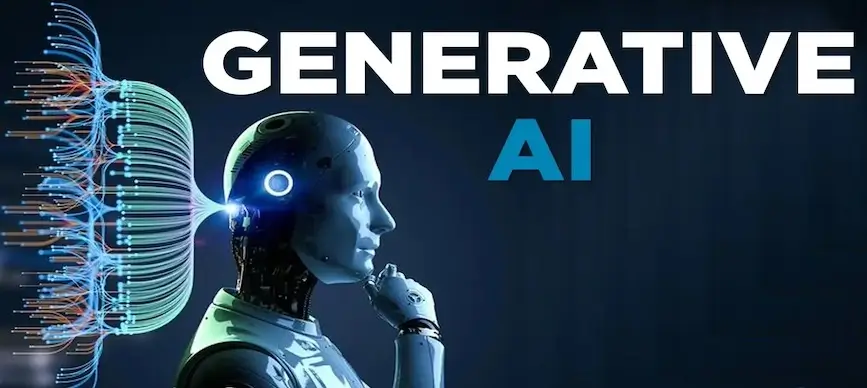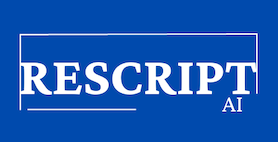Generative AI models are trained on large datasets of existing content. This content can be text, images, music, or any other type of data that the model is designed to generate. The model learns the patterns in the training data and then uses that knowledge to generate new content that is similar in style and quality.
Choosing a Framework
To train a generative AI model, you’ll need to choose a suitable framework. Several popular frameworks offer the tools and libraries needed for developing and training AI models. The choice of framework largely depends on your project’s requirements and your familiarity with the framework’s ecosystem. Some of the widely used frameworks for generative AI models include:
-
- TensorFlow: Developed by Google, TensorFlow is an open-source machine learning framework that offers a wide range of tools and libraries for building AI models.
- PyTorch: Created by Facebook’s AI Research lab, PyTorch is known for its flexibility and dynamic computation graph, making it a favorite among researchers and developers.
- Keras: Keras is a high-level neural networks API that can run on top of other deep learning frameworks, such as TensorFlow and Theano. It’s known for its simplicity and ease of use.
- Fast.ai: This is an open-source deep learning library built on top of PyTorch. Fast.ai focuses on making deep learning accessible to practitioners with varying levels of experience.
- Hugging Face Transformers: Hugging Face Transformers is a library that provides pre-trained generative AI models that can be used for a variety of tasks.
- Google AI Platform: Google AI Platform offers a suite of tools and services that can be used to train and deploy generative AI models.
Data Collection and Preprocessing
Data is the lifeblood of any AI model, and for generative AI, it’s no different. Your first step is to gather a diverse and ample dataset that matches the type of content you want your model to generate. Whether you’re creating text, images, or music, having high-quality training data is essential.
For text-based generative models, you might consider using datasets like books, articles, or social media posts. Image generation models would require collections of images, while music generation models could use musical scores or audio files.
Data preprocessing is equally crucial. This involves cleaning, formatting, and structuring the data for training. Depending on your dataset, this could involve tasks like text tokenization, image resizing, or audio normalization. The goal is to have a standardized dataset that the model can work with effectively.
Automated Ai Chatbot Solution Guide

Defining Your Model Architecture
The next step is to design the architecture of your generative AI model. This involves choosing the type of model you want to create and configuring its layers and parameters. Here are some common types of generative AI models:
- Text Generation Models: Recurrent Neural Networks (RNNs) and Long Short-Term Memory networks (LSTMs) are often used for text generation. You can also use Transformer-based models like GPT-3 or BERT for more advanced natural language generation.
- Image Generation Models: Convolutional Neural Networks (CNNs) are popular for generating images. Variational Autoencoders (VAEs) and GANs are used to create more sophisticated and high-quality images.
- Music Generation Models: Recurrent Neural Networks are commonly used for music generation. They are trained on musical sequences and can generate new compositions based on the learned patterns.
Your model’s architecture should be aligned with the type of content you want to generate. Experiment with different architectures and parameters to find the one that works best for your project.
Training Your Model
Training a generative AI model can be a resource-intensive process, requiring substantial computational power. You’ll need a machine with a powerful GPU or, ideally, access to cloud-based services with GPUs to speed up the training process.
During training, your model learns by optimizing its internal parameters to minimize the difference between the generated content and real data. The loss function, a measure of the difference between the generated content and real data, plays a crucial role. Lowering the loss function’s value through backpropagation and optimization techniques is the key to training a successful generative model.
Training times can vary greatly depending on your dataset’s size, model complexity, and available resources. It may take hours, days, or even weeks. Regularly monitoring the model’s performance, visualizing generated samples, and fine-tuning the architecture are essential during this phase.
Fine-Tuning and Hyperparameter Optimization
Fine-tuning your model is a critical step in the training process. After an initial round of training, you should evaluate the model’s performance and make necessary adjustments. This could involve modifying the architecture, changing hyperparameters, or collecting additional data to improve the model’s output.
Hyperparameter optimization is also crucial. These are the parameters that control the learning process and network architecture. Experimenting with different hyperparameter values can significantly impact the model’s quality and efficiency.
Evaluating Model Performance
Evaluating the performance of your generative AI model is a crucial step. Metrics for evaluation may vary depending on the type of content you’re generating. Here are some common methods:
- Text Generation: For text, metrics like perplexity, BLEU score, and human evaluation can be used to assess the quality of generated text.
- Image Generation: In image generation, metrics like Inception Score and Fréchet Inception Distance (FID) measure the quality and diversity of generated images.
- Music Generation: In music generation, evaluation could involve measures like harmonic consonance, rhythm quality, and human evaluation of the generated compositions.
Related:What You Need To Know About Generative Ai

Deploying Your Model
Once your generative AI model is trained and performing well, you might want to deploy it for practical use. Deployment can vary widely depending on the application. Here are some deployment options:
- API Services: You can expose your model through an API, allowing others to access it programmatically.
- Interactive Applications: Create web or mobile applications that use your generative model to provide value to users.
- Embedded Systems: For specialized applications, you can deploy the model directly onto embedded systems, such as robotics or IoT devices.
Ethical Considerations
As you explore the world of generative AI, it’s vital to be aware of the ethical implications of your work. The content generated by AI can sometimes be misused, and ensuring responsible AI usage is crucial. Be mindful of issues related to bias, fairness, and potential harm that could arise from your AI creations.
Case studies of generative AI models
Here are a few case studies of generative AI models that are being used in the real world:
- DALL-E 2: DALL-E 2 is a text-to-image generation model that can create realistic images from text descriptions. It is being used by artists, designers, and creative professionals to create new and innovative content.
- PaLM: PaLM is a large language model that can generate text, translate languages, write different kinds of creative content, and answer your questions in an informative way. It is being used by researchers and businesses to develop new applications and solve complex problems.
- MusGAN: MusGAN is a music generation model that can create realistic music in a variety of styles. It is being used by musicians and producers to create new and innovative music.
Training your own generative AI model can be a challenging but rewarding experience. By following the steps outlined in this article, you can create your own generative AI model that can be used to generate new content in a variety of formats.





